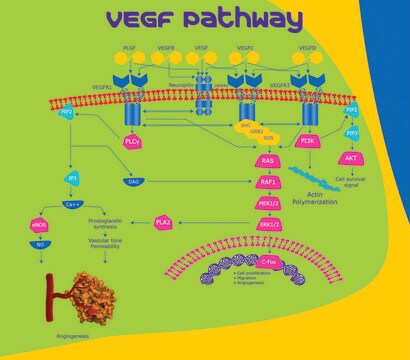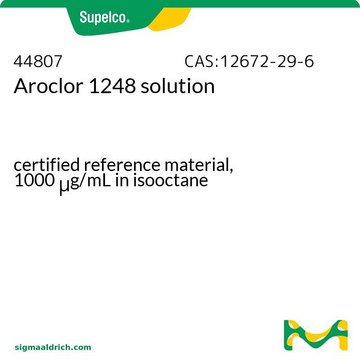SRP6061
VEGFR2 human
recombinant, expressed in insect cells, ≥95% (SDS-PAGE)
Synonim(y):
Fetal liver kinase 1, Kinase insert domain receptor, Protein-tyrosine kinase receptor flk-1
About This Item
Polecane produkty
pochodzenie biologiczne
human
rekombinowane
expressed in insect cells
Próba
≥95% (SDS-PAGE)
Formularz
lyophilized
masa cząsteczkowa
116
opakowanie
pkg of 10 μg
warunki przechowywania
avoid repeated freeze/thaw cycles
numer dostępu NCBI
Warunki transportu
wet ice
temp. przechowywania
−20°C
informacje o genach
human ... VEGFR2(3791)
Opis ogólny
Działania biochem./fizjol.
Postać fizyczna
Uwaga dotycząca przygotowania
Rekonstytucja
Inne uwagi
Kod klasy składowania
13 - Non Combustible Solids
Klasa zagrożenia wodnego (WGK)
WGK 3
Temperatura zapłonu (°F)
Not applicable
Temperatura zapłonu (°C)
Not applicable
Wybierz jedną z najnowszych wersji:
Certyfikaty analizy (CoA)
It looks like we've run into a problem, but you can still download Certificates of Analysis from our Dokumenty section.
Proszę o kontakt, jeśli potrzebna jest pomoc Obsługa Klienta
Masz już ten produkt?
Dokumenty związane z niedawno zakupionymi produktami zostały zamieszczone w Bibliotece dokumentów.
Nasz zespół naukowców ma doświadczenie we wszystkich obszarach badań, w tym w naukach przyrodniczych, materiałoznawstwie, syntezie chemicznej, chromatografii, analityce i wielu innych dziedzinach.
Skontaktuj się z zespołem ds. pomocy technicznej







